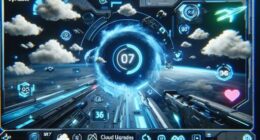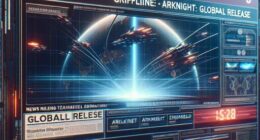“Revolutionizing 4D Modeling: Discover the Power of Uni4D Framework!”
In today’s complex project landscapes, professionals are often hindered by the constraints of traditional modeling methods. But now, imagine if you could transcend these limitations with an approach that not only encompasses three-dimensional space but also integrates time as a crucial component in planning and execution. Welcome to the world of 4D modeling, a transformative method designed to elevate your project planning to unprecedented levels of efficiency and visualization.
The Uni4D Framework emerges as a beacon of innovation in this domain. It offers a user-friendly platform tailored for both beginners and experts, simplifying the way we utilize 4D modeling. Picture a streamlined workflow that fosters team collaboration — and with every project phase coming to life in real-time. Join us as we dive into how Uni4D is revolutionizing the field, from its standout features to its real-world impacts, and learn how embracing this framework could redefine success in your projects.
Understanding 4D Modeling
4D modeling integrates the dimension of time with traditional three-dimensional visualization, allowing users to track how components change over the project’s duration. This advanced technique captures the intricate motion and transformation of elements in a given space, presenting a comprehensive picture of how scenarios evolve.
The Uni4D framework harnesses this concept by using pretrained visual foundation models to achieve dynamic segmentation, dense pixel tracking, and monocular depth estimation, all extracted from standard video footage. By optimizing both static and dynamic scenes, Uni4D achieves accurate scene reconstructions without the need for extensive retraining.
Critical to its function, dynamic segmentation distinguishes moving elements from static backgrounds in videos, enhancing model precision. Combined with dense motion tracking and monocular depth estimation, these components provide an accurate understanding of distances and movements, empowering developers to produce realistic simulations applicable across fields such as robotics, gaming design, and virtual reality.
Key Features of the Uni4D Framework
The Uni4D Framework stands as a significant advancement in dynamic 4D modeling. It allows users to reconstruct scenes from simple video clips without demanding extensive retraining. By leveraging existing visual foundation models, the framework excels in tasks such as dynamic segmentation, dense motion tracking, and monocular depth estimation. It features a multi-stage optimization process that refines camera poses and geometries, achieving impressive scene reconstructions.
Its strength lies in combining various visual inputs for a comprehensive scene understanding, employing smooth regularization techniques to refine segmentation and depth estimation. The framework effectively handles complex scenarios where traditional methods might struggle, adapting seamlessly without the need for fine-tuning or extensive data preparation.
This adaptability across different environments makes Uni4D an essential tool for researchers and developers looking for robust computer vision solutions.
Benefits of Implementing Uni4D
Harnessing Uni4D presents numerous advantages, particularly in projects focused on dynamic 4D modeling. It enhances scene accuracy without necessitating labor-intensive retraining, thus saving time and resources. The incorporation of pretrained visual models enhances depth estimation and camera pose optimization, ensuring high fidelity in both static and dynamic reconstructions.
Uni4D’s performance exceeds baseline models across varied datasets, effectively processing complex motions with robust real-world data handling. Its ability to adapt across different applications without extensive preparation makes it invaluable in fields like robotics, computer vision, and augmented reality.
Advanced techniques such as smoothness regularization make reconstruction processes efficient, minimizing trajectory errors while ensuring depth estimation precision, pivotal factors for project success.
Real-World Applications
The Uni4D framework holds immense potential in a variety of applications, particularly in fields such as robotics, computer vision, and augmented reality. Dynamic scene reconstruction is crucial for autonomous vehicles, where precise camera poses and depth perception are key to navigation. Uni4D’s ability to process everyday video inputs enables the creation of adaptable models without extensive re-training.
In entertainment, Uni4D can be used for generating immersive experiences by integrating realistic animations into digital environments. Furthermore, in surveillance or gaming, Uni4D’s dense motion tracking can lead to refined movement monitoring, enhancing security and providing enriched user interactions in gaming.
With its versatility, Uni4D pushes the boundaries of project visualization across various industries, promoting advancements that enhance both functionality and user engagement.
In conclusion, the Uni4D Framework signifies a significant step forward in the evolution of 4D modeling, offering groundbreaking solutions for project visualization and management. By fusing time with spatial considerations, it supports dynamic planning and execution across numerous sectors. Its primary features — like real-time data integration, a user-friendly interface, and collaborative capabilities — render it an indispensable asset for professionals eager to streamline workflows. The advantages of incorporating Uni4D extend beyond efficiency, including enhanced decision-making and stakeholder engagement through transparent project timelines. As its real-world applications in construction, urban planning, and event management show, Uni4D is set to redefine project conceptualization and execution. By mastering this framework, users can transform their approach to complex projects, gaining insights that redefine success.









